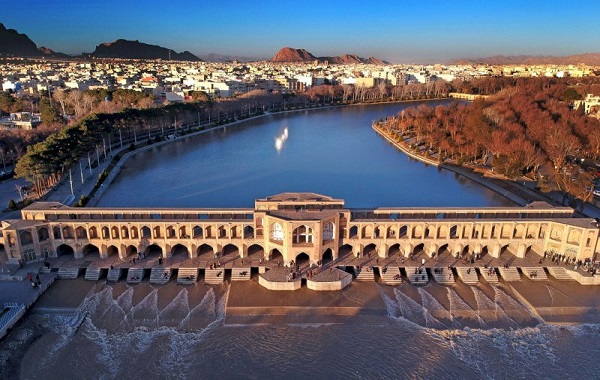The capital and largest city in western Iran is Esfahan, often written as Isfahan. Many years ago, visitors of Esfahan called this city half of the world because it was a big and magnificent city. Due to this expression, Esfahan is the heart of Iran. Around 340 km south of the capital city of Tehran, Esfahan is located on the north bank of the Zyandeh River at an elevation of around 1,600 meters. Prior to the Persian Safavid dynasty, Esfahan flourished under the Seljuq Turks. The city is one of the most prominent architectural centers in the Islamic world in addition to being an important regional and provincial capital. In this post, we take a short look at Esfahan’s beautiful places and popular activities there.
Naqsh-e Jahan Square
Located in the heart of Isfahan, Naqsh-e Jahan Square is a collection of old structures and a public area also known as the Saeed Square and the Shah Square. according to inquiries, Naghsh-e-Jahan is one of the most Isfahan beautiful places. One aspect that makes Naqsh-e Jahan unique is the open green space in the middle of the square, which is unusual for Iranian architecture. The magnificent square represents the fervor of the Safavid era when Isfahan was elevated to the status of Persia’s capital. Naqsh-e Jahan’s designers had grand plans for it, including using it for national celebrations and elevating the new capital. In the past, it was used for gathering troops, polo tournaments, public executions, and festivities. The Royal Mosque, the Magical Portico of Qaysariyyeh, and the Timurid Palace are among the must-see sights.
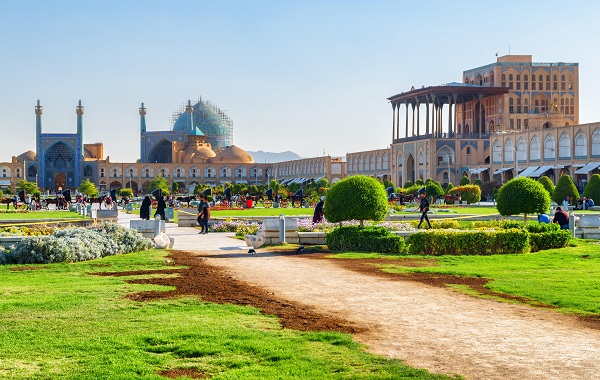
Khaju Bridge
One of the most well-known bridges in Iran is the Khaju Bridge. This bridge serves as a building, a weir, and a location for public gatherings in addition to being a bridge. Khaju Bridge is among the famous places in Isfahan. Paintings and tile designs are used to embellish it. It is an exhaustive illustration of Persian architecture. The bridge has been built for 350 years, and it is still in use. It serves as a recreation area with a focus on fostering cultural and social exchange. The most beautiful bridge in Isfahan is the Pole Khaju or Kahju Bridge. Shah Abbas II, the Safavid king of Persia, ordered the construction of this bridge in 1650. It serves as a building and a location for public gatherings in addition to being a bridge and a weir. Shah Abbas (King Abbas) once sat on a pavilion in the middle of the building to take in the view.
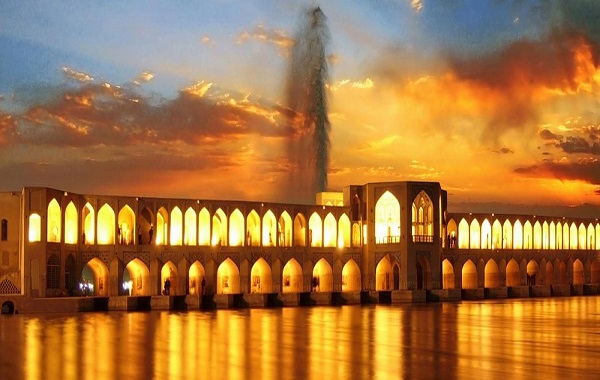
Vank Cathedral
Vank Cathedral is located in Jolfa district, on the southern coast of the Zayandehrud River, not far from the city center. The walk to the Isfahan Music Museum – 5 minutes, and to the metro station and Si-o-Se Pol – is 20 minutes. There are some cafes and restaurants around the cathedral. Vank Cathedral is open for visitors from 9.00 to 18.00, with a break for praying from 12.30 to 15.00. Except for the cathedral itself, there is a courtyard that has a bell tower, several graves of Orthodox and protestant Christians, a library, a museum, and a memorial to the 1915 Armenian genocide in Turkey. You may spend some time here before heading to the Zayandehrud embankment for an evening promenade.
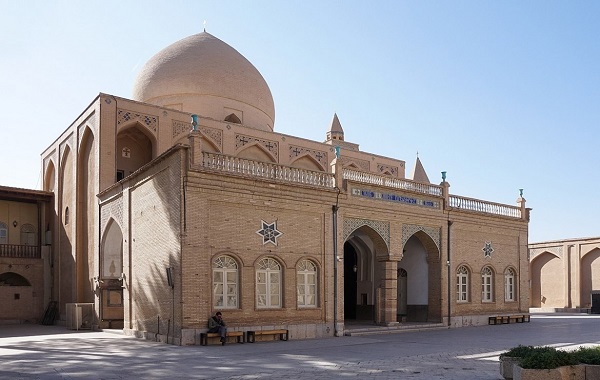
Chehel Sotoun
Isfahan is known around the world as an aesthetic and historic city. Chehel Sotoun Palace is one of the most popular tourist destinations and because of this place, Esfahan is the heart of Iran. Its name refers to a palace with 40 columns. There are many halls, a terrace, and a pool. Everyone is amazed and grateful for its amazing architecture. Additionally, UNESCO has it on its list of cultural heritage sites. The construction of Chehel Sotoun Palace and its royal garden dates back to the Safavid Era in 1588, but it wasn’t fully finished until 1647. Shah Abbas, the first king of the Safavid Empire, chose Isfahan as the capital city, and he decided to build up a long street, calling it Chahar Bagh (the four gardens), and develop some other gardens.
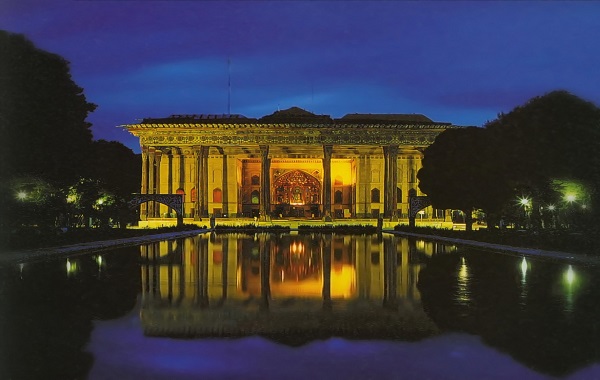
Jameh Mosque of Isfahan
One of Persia’s oldest and most revered buildings may be found in the charming city of Isfahan, in a neighborhood that truly resembles an oasis. Isfahan’s majestic Atiq Jameh Mosque combines a number of architectural styles from many historical periods. The building is much more distinctive as a result of this circumstance. Remember that you are viewing a UNESCO World Heritage Site. Before it was a mosque, this location was a fire temple during the Sassanid era. The building’s pre-Islamic past has been established by archaeological finds, including the bottom of a pillar, but its precise foundation date is still unknown. According to the best estimates, this building was constructed around 2,000 years ago. Although earlier discoveries suggest that the Seljuq Dynasty is primarily responsible for this mosque’s exterior, a refurbishment was carried out during the Safavid Dynasty.
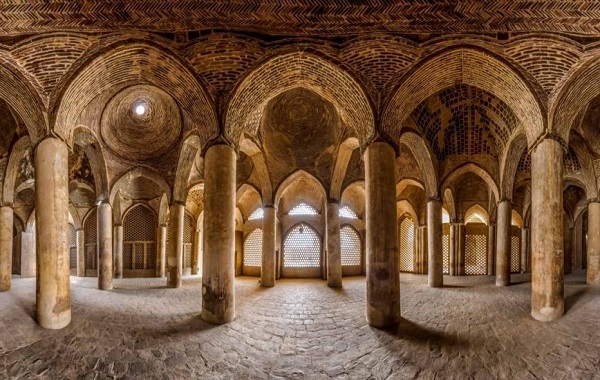
Conclusion
Esfahan is one of the oldest cities in Iran and has many beautiful sights. in most written d Also, in this city, you can buy national handicrafts, traditional sweets, and traditional food. Esfahan is a perfect destination for foreign tourists because they can experience unique things in this city that only existed there. The best season to travel to Isfahan is spring because in this season weather is perfect and you never feel bad. So if you decide to travel to Esfahan, don’t miss the chance to visit the brilliant Esfahan!
